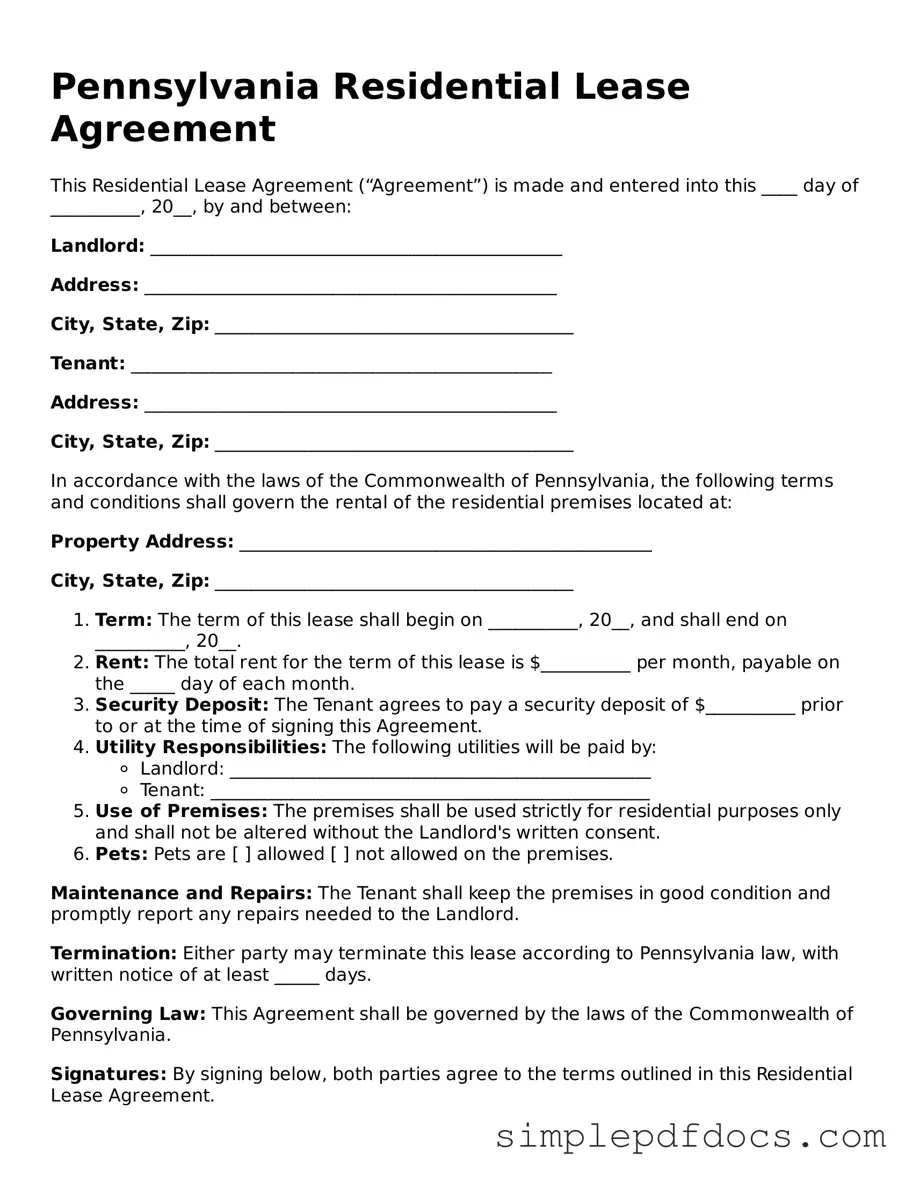Legal Residential Lease Agreement Document for the State of Pennsylvania
The Pennsylvania Residential Lease Agreement form is a legal document that outlines the terms and conditions of renting residential property in Pennsylvania. This agreement serves to protect the rights of both landlords and tenants by detailing responsibilities, rental amounts, and lease duration. Understanding this form is essential for anyone involved in a rental arrangement in the state.
Get Document Here
